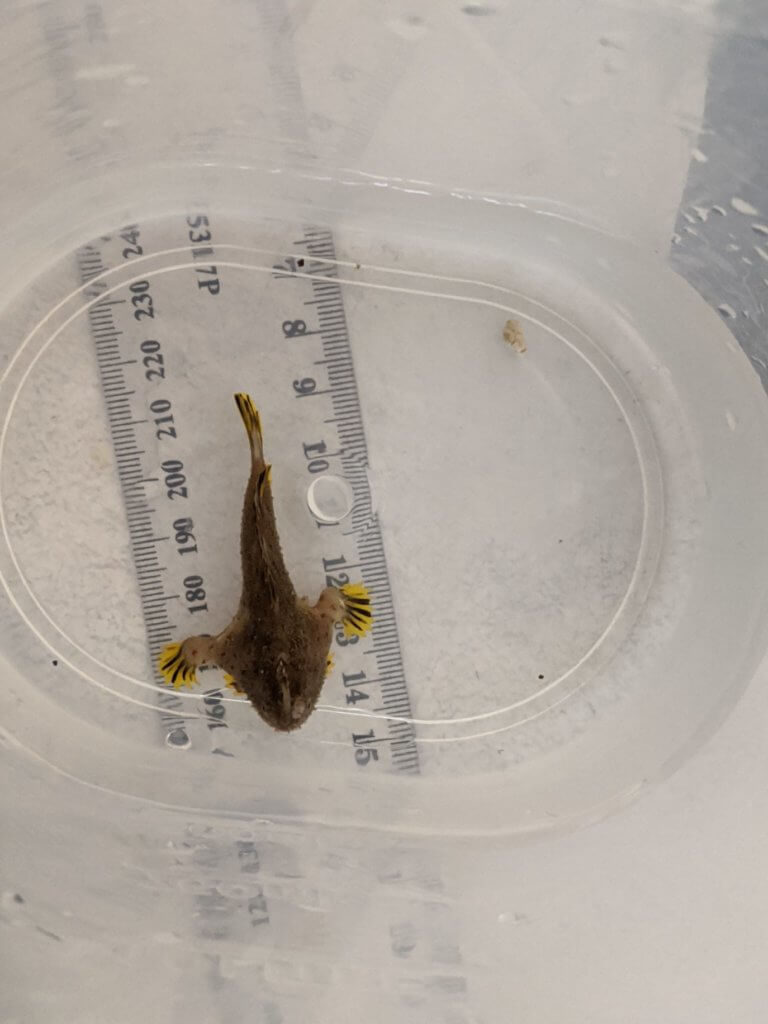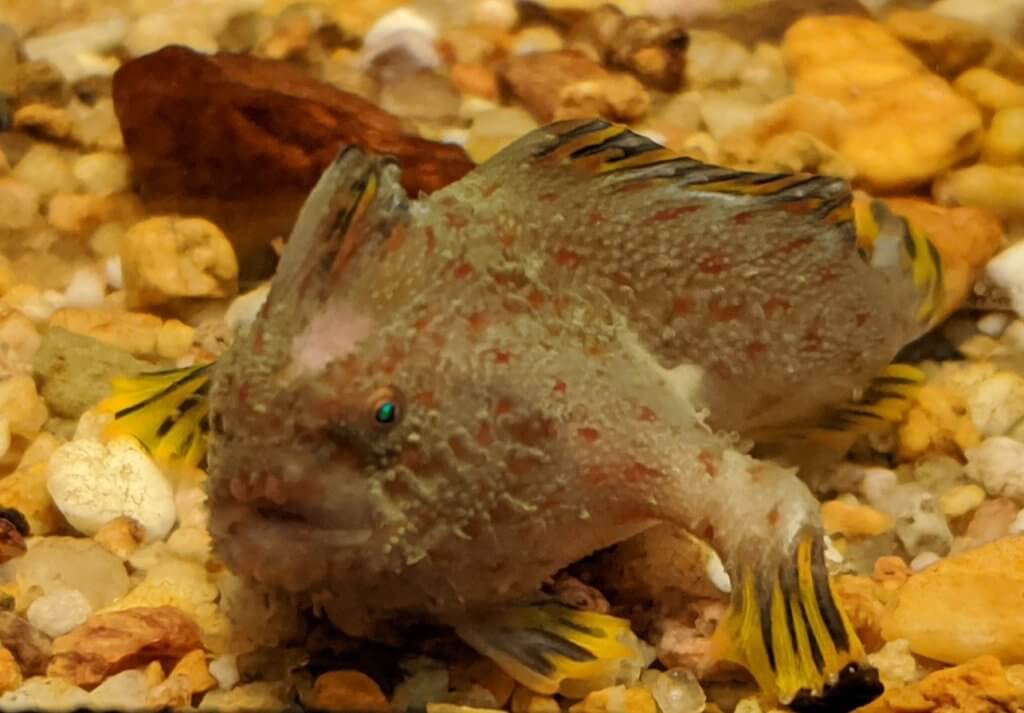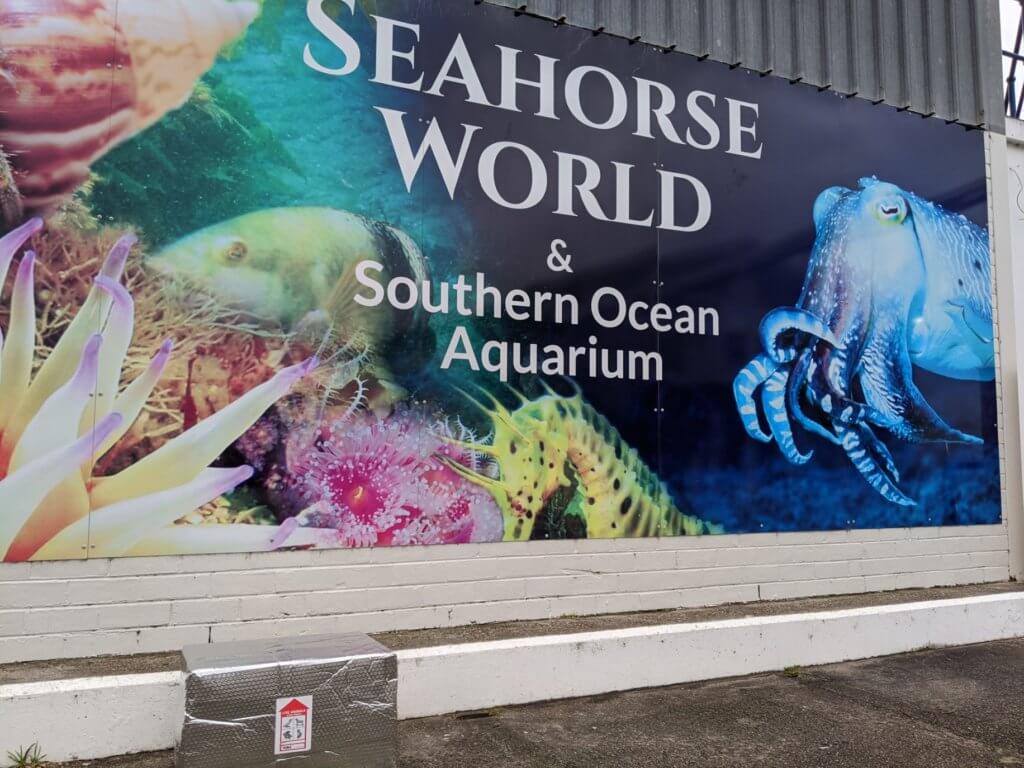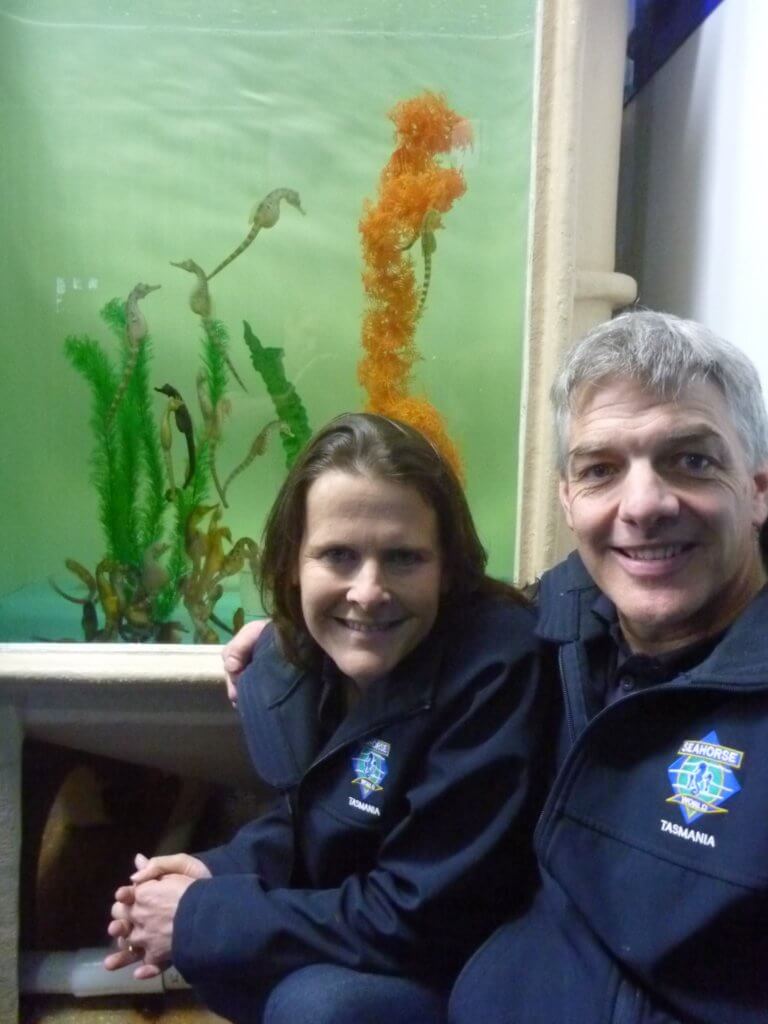Rachelle Hawkins is one of the owners and directors of Seahorse World in Beauty Point, Tasmania and is the original Head Biologist of the seahorse farm, having worked with the organisation since it started. Rachelle has been involved with the National Handfish Recovery Team since ~2016.
Her involvement buoyed by a small article in Hatchery International magazine – where she read about the National Handfish Recovery Team (NHRT) in Tasmania and got in touch with Dr Tim Lynch, the Chair of the Team at the time – who welcomed her to be a part of the team.
After several years looking after Spotted handfish, the NHRT launched the first trial of hatching red handfish eggs in captivity, and asked Rachelle if Seahorse World could support the program by housing the first clutch of red handfish babies. The eggs were collected by IMAS and CSIRO divers, hatched at CSIRO and then transported - by Rachelle - to Seahorse World immediately after release - at approximately 4mm in size, in what Rachelle would later describe as a very slow and careful trip!
We caught up with Rachelle recently to ask her about the recent release of some of the juvenile red handfish that had been raised at Seahorse World over the past two years.
What are some of the challenges in raising baby red handfish?
Seahorse World had been looking after spotted handfish from about 2017, so while I was excited about the prospect about of taking baby red handfish, given they are so much rarer and there are so few left in the wild, it was also quite daunting! I knew that we would be able to feed and care for them - but was also a little nervous.
After 2 years of looking after juvenile red handfish, how did you feel when it came time to return themh to the wild?
It was a real mixture of emotions! On one side, it was great to see the culmination of the project and how successful it had been - and to be a part of that. But on the other side, it was like my babies were being released! So of course I was nervous and worried about that, and really relieved to hear that they have since been resighted in the wild.



What are your hopes for the future of the work and the species?
I’m very keen to continue my support of the work at Seahorse World and in my position on the NHRT. There is still so much we need to do for this species. We’re hoping that we’ll be able to successfully breed some adults in captivity and help establish a larger captive breeding program – which is likely very important moving forward. But either way, I am hopeful for the future of red handfish.
And finally, if people want to see handfish up close – do you still have any?
Yes! We have some juvenile and adult red handfish – as well as some adult spotted handfish! Plus, of course plenty of seahorses and a variety of other local Tasmanian marine species!
Seahorse World is open 7 days a week year-round (except Christmas Day). From December to April tours depart regularly from 9.30am – 4. 00pm (4.30pm in peak times or if booked). During May to November tours depart on the hour from 10.00am to 3.00pm (4pm tours may be conducted if booked in advance). The guided tour takes around 45 minutes, but please plan to allow at least an hour at Seahorse World. We also have a great café (overlooking the water) and gift shop!




Images courtesy of Seahorse World